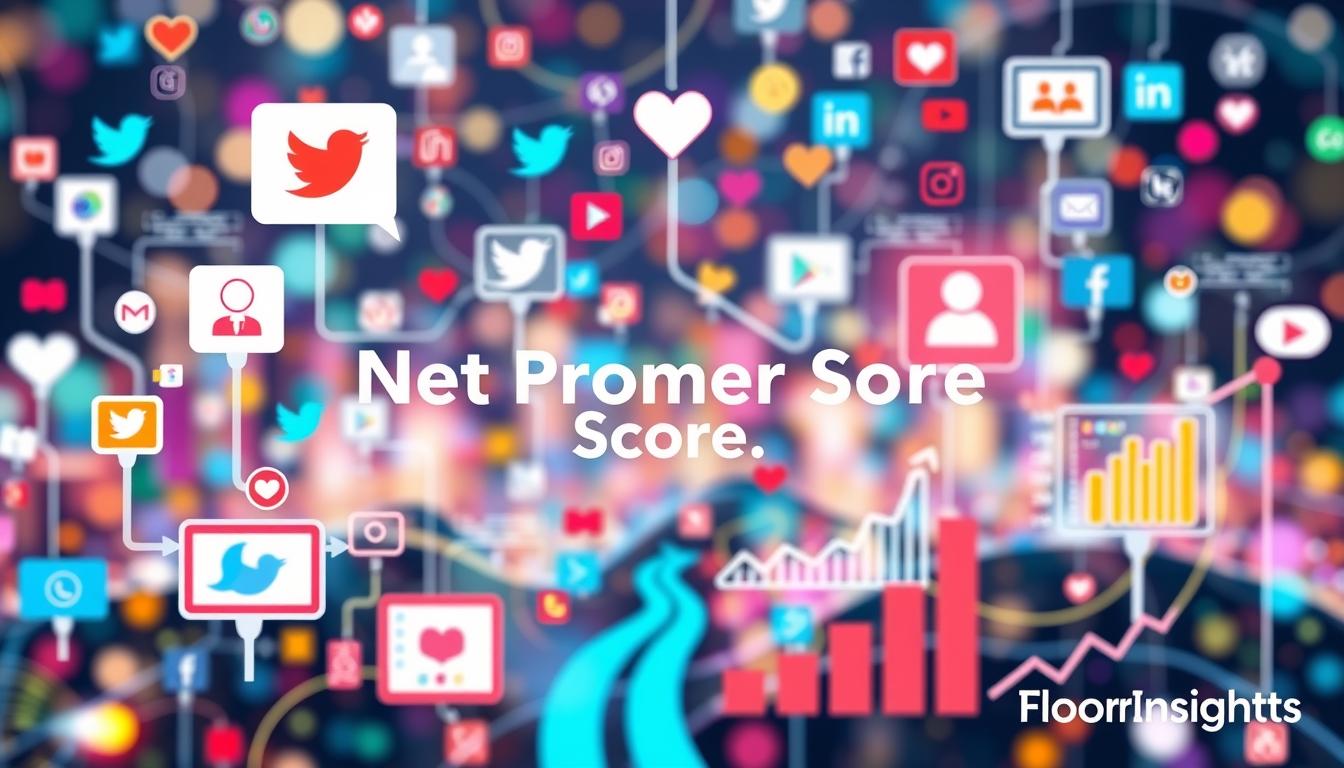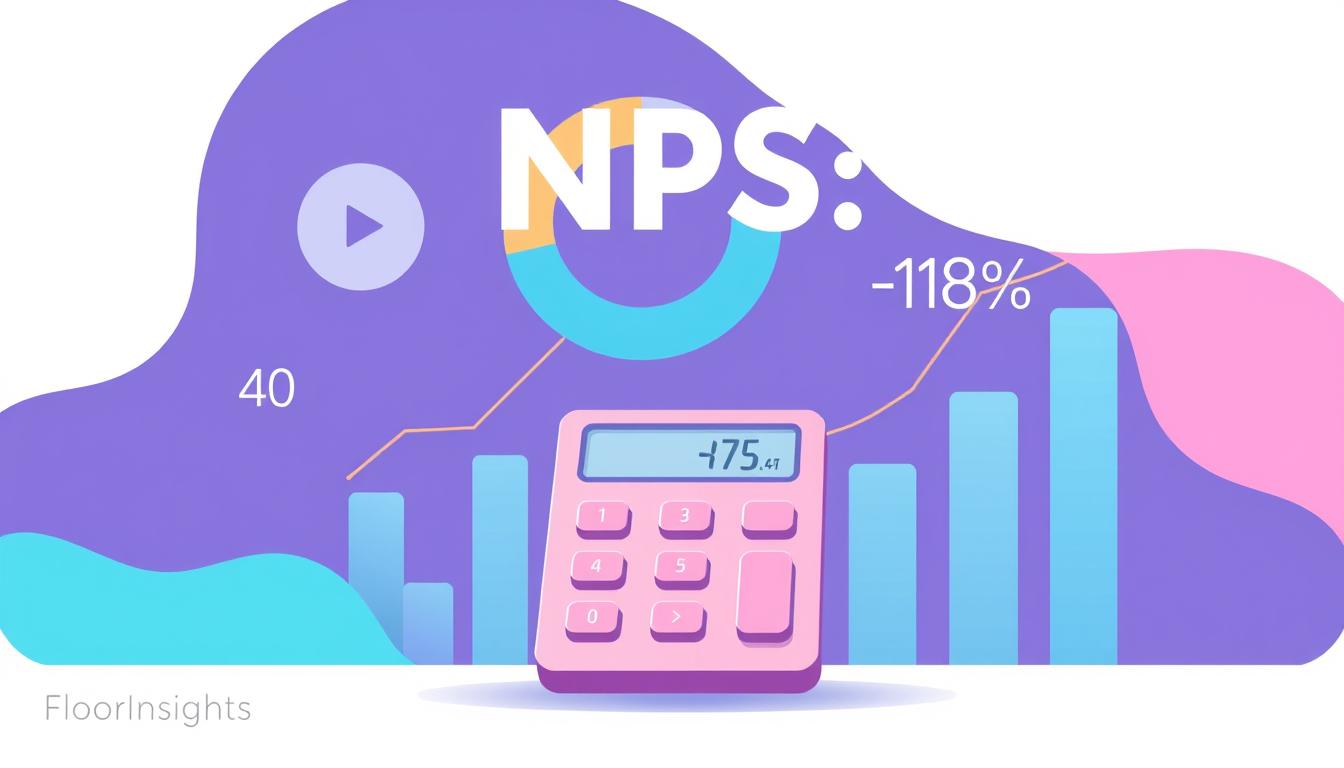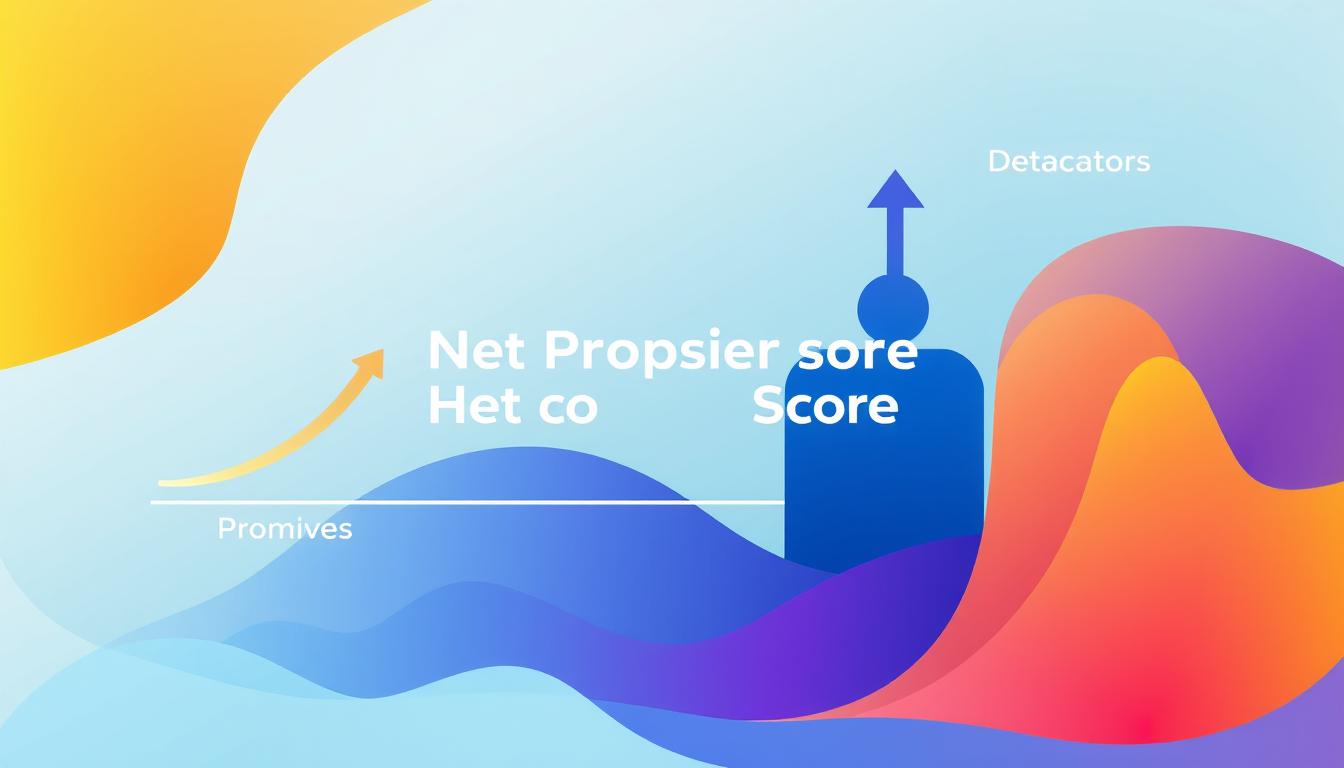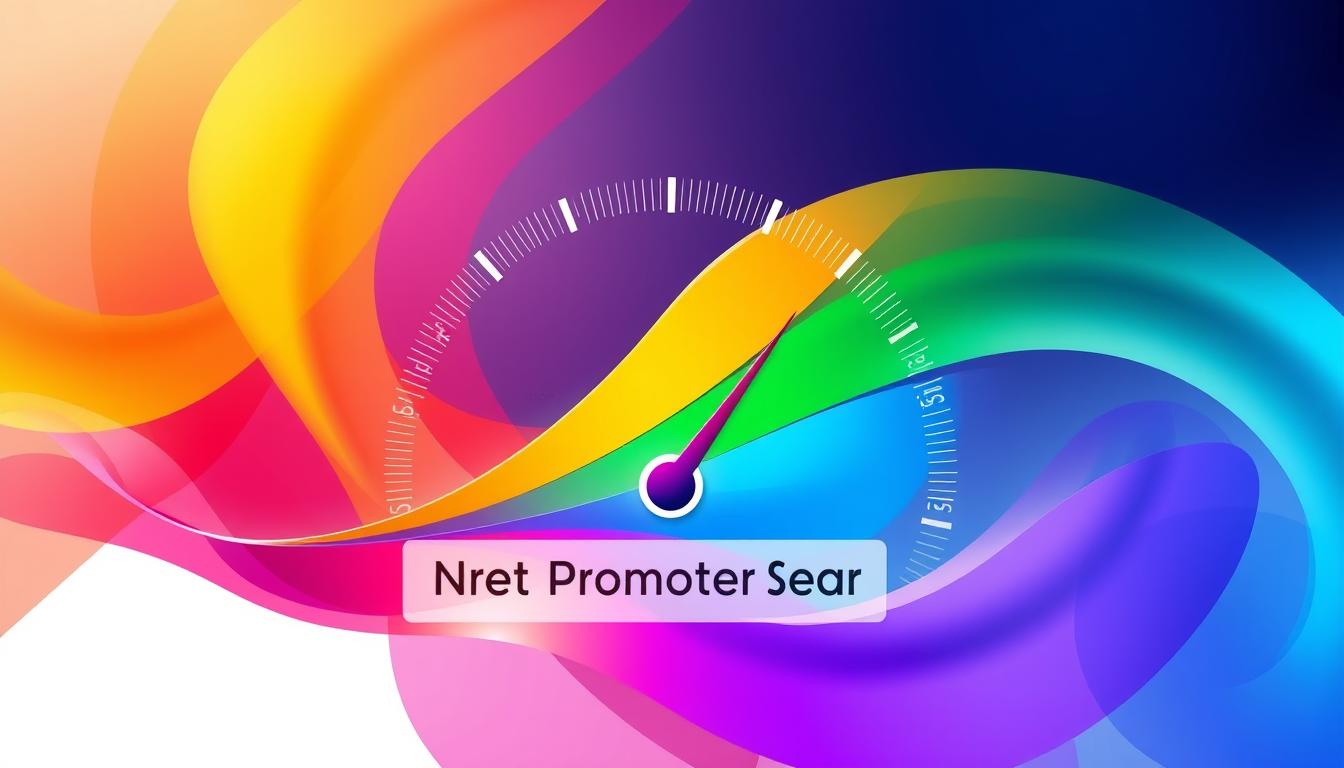The digital landscape in India has been rapidly evolving, and social media platforms have emerged as significant tools for customer engagement. To optimize these platforms, utilizing the Net Promoter Score in marketing has proven to be highly effective. NPS is a crucial metric that helps businesses measure customer loyalty and overall satisfaction. By leveraging NPS for brand growth, companies can gain valuable insights into their audience, shape their marketing strategies, and foster deeper connections.
Incorporating NPS into social media strategies allows brands to optimize their social media engagement tactics. Understanding the sentiment of promoters, passives, and detractors enables businesses to fine-tune their approach, ensuring a more compelling and personalized customer experience. As a result, companies in India have seen substantial improvements in customer retention and brand advocacy. This section delves into the significance of NPS in the realm of social media marketing and explores its impact on brand success.
Key Takeaways
- Net Promoter Score (NPS) is vital for measuring customer loyalty and satisfaction.
- Leverage NPS to shape and improve social media marketing strategies.
- Integrating NPS can enhance social media engagement and customer retention.
- Businesses in India benefit significantly from the insights provided by NPS.
- Understanding customer sentiment through NPS helps in delivering personalized experiences.
Understanding Net Promoter Score
The Net Promoter Score (NPS) is a vital customer satisfaction metric that helps businesses gauge customer loyalty. It segregates customers into three categories based on their feedback: Promoters, Passives, and Detractors. Understanding how to effectively leverage NPS can significantly enhance customer retention efforts and boost overall business success.
What is Net Promoter Score?
NPS is calculated through a straightforward process known as the NPS calculation. Customers are asked a single question: “On a scale of 0 to 10, how likely are you to recommend our product or service to a friend or colleague?” Based on their responses, customers are classified into three groups:
- Promoters (score 9-10): Loyal enthusiasts who will keep buying and refer others, fueling growth.
- Passives (score 7-8): Satisfied but unenthusiastic customers who are susceptible to competitor offers.
- Detractors (score 0-6): Unhappy customers who can damage your brand and impede growth through negative word-of-mouth.
The score is then calculated by subtracting the percentage of Detractors from the percentage of Promoters. This NPS calculation provides an index ranging from -100 to +100 that businesses can use to benchmark against competitors and within industries.
Origins of NPS
The concept of Net Promoter Score was introduced by Fred Reichheld, Bain & Company, and Satmetrix in 2003. It was designed to simplify the measurement of customer loyalty and provide a clear picture of customer sentiment. Since its inception, NPS has evolved to become a fundamental tool in benchmarking customer loyalty across various sectors, including the flourishing Indian market.
The widespread adoption of NPS underscores its efficacy in capturing the essence of customer experiences. By leveraging this singular customer satisfaction metric, companies can gain valuable insights into customer expectations and improve their strategic approaches.
The Importance of Measuring Customer Loyalty
Understanding how loyal our customers are is crucial for sustaining long-term customer relationships. By evaluating loyalty using NPS, we can gain valuable insights that help us understand the level of satisfaction and commitment our customers have towards our brand. This empowers us to make informed decisions that enhance customer retention and foster stronger engagements.
How NPS Measures Customer Loyalty
Net Promoter Score (NPS) is a powerful tool for measuring customer loyalty. It asks customers a simple question: “How likely are you to recommend our product or service to others?” The responses are then analyzed to categorize customers into promoters, passives, and detractors. This method of evaluating loyalty using NPS gives us a clear picture of our customer’s enthusiasm and satisfaction levels, guiding us toward improvements where necessary.
Benefits of Measuring Customer Loyalty with NPS
There are several benefits to measuring customer loyalty with NPS. First, it provides NPS insights for customer retention that can predict future business growth. Regularly monitoring NPS scores can help identify areas that need attention, paving the way for improved customer service strategies. Additionally, leveraging these insights helps us in building long-term customer relationships, ensuring continuous engagement and satisfaction.
In conclusion, the use of NPS as a metric for customer loyalty offers a comprehensive understanding of how our customers feel and how likely they are to continue endorsing our brand. This, in turn, guides us in strengthening our approach towards customer satisfaction and retention.
Integrating NPS into Social Media Strategies
When integrating the Net Promoter Score (NPS) into our social media strategies, we begin by focusing on strategic customer feedback. This feedback not only highlights customer sentiment but also guides our NPS-driven content marketing efforts. With a strong foundation in NPS data, we can create content that resonates more deeply with our audience, fostering meaningful social media user engagement.
Incorporating NPS feedback into our broader social media communication plans involves several key practices:
- Analyzing Feedback: By examining the feedback collected through NPS surveys, we can identify common pain points and areas of satisfaction. This helps us tailor our content to address the specific needs and preferences of our audience.
- Creating Targeted Content: Using insights from NPS-driven content marketing, we can develop targeted posts and campaigns that speak directly to promoters, passives, and detractors. Tailoring messages to each group ensures higher engagement and more effective communication.
- Engagement Strategy: Engaging with our audience through social media user engagement tactics such as responding to comments, sharing user-generated content, and using interactive features like polls and live sessions. These activities not only boost engagement but also foster a sense of community and loyalty.
By leveraging NPS data effectively, Indian businesses can significantly enhance their social media strategies. Aligning our marketing campaigns with strategic customer feedback ensures that our efforts are both impactful and relevant, driving better results across all digital platforms.
| Approach | Benefits |
|---|---|
| Analyzing Feedback | Identifies pain points and areas of satisfaction; informs content creation |
| Creating Targeted Content | Increases relevance and effectiveness of marketing campaigns |
| Engagement Strategy | Boosts interaction, fosters community, and improves loyalty |
Enhancing Customer Experience Management with NPS
In today’s competitive market, managing customer experience effectively is paramount. Net Promoter Score (NPS) has proven to be a powerful tool in this regard. By leveraging NPS for real-time feedback and trend analysis, companies can gain invaluable insights and make informed decisions swiftly.
Using NPS for Real-Time Feedback
Utilizing NPS for real-time customer insights allows businesses to respond promptly to feedback. This timely response can significantly enhance customer satisfaction, ensuring that issues are resolved before they escalate. Furthermore, by tracking experience metrics, companies can identify patterns and make necessary adjustments to improve the overall customer experience.
Customer Experience Trend Analysis
Customer experience trend analysis through NPS provides a comprehensive view of how customer sentiments evolve over time. This method allows businesses to track and evaluate customer experience metrics continuously, setting the stage for ongoing improvements. Regular analysis helps in identifying key areas for CX improvement with NPS, ensuring that customer interactions are consistently optimized.
By embracing these strategies, businesses in India can stay ahead of the curve and maintain high levels of customer loyalty and satisfaction.
| Aspect | Benefit |
|---|---|
| Real-Time Feedback | Immediate issue resolution, enhanced customer satisfaction |
| Trend Analysis | Continuous improvement, effective tracking experience metrics |
Utilizing NPS Surveys on Social Media Platforms
In the dynamic digital landscape, leveraging NPS surveys on social media platforms can significantly enhance customer engagement and loyalty. By adhering to NPS survey best practices, businesses in India can effectively gather valuable feedback from their audience. This section delves into the core strategies for crafting impactful NPS surveys and analyzing the results to gain actionable insights from NPS.
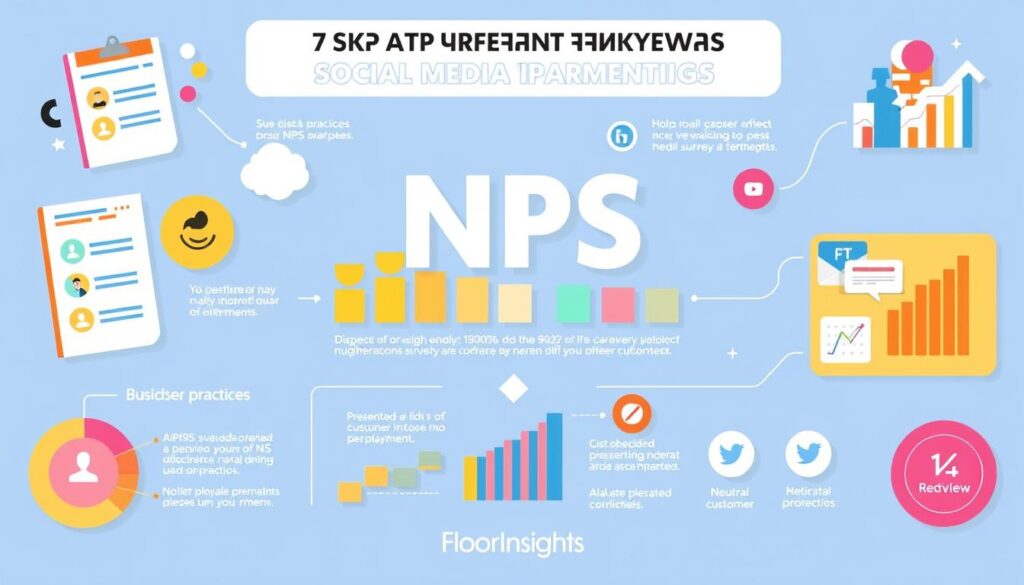
Best Practices for NPS Surveys on Social Media
Implementing NPS survey best practices involves several key steps:
- Crafting Effective Surveys: Precise and engaging questions designed to gauge customer loyalty and satisfaction.
- Optimal Timing: Distributing surveys at moments of high engagement, such as after a purchase or interaction, to increase response rates.
- Platform Selection: Utilizing popular social media channels like Facebook, Twitter, and LinkedIn to reach a broader audience.
- Interactive Formats: Incorporating visuals and interactive elements to keep the audience engaged.
Analyzing NPS Survey Results
Once data is collected, interpreting NPS data is crucial for extracting actionable insights from NPS surveys. Key steps include:
- Segmenting Responses: Categorize feedback into promoters, passives, and detractors to understand different customer perspectives.
- Identifying Trends: Look for recurring themes and sentiments to pinpoint common areas of improvement.
- Correlation with Social Metrics: Align NPS results with social media metrics like engagement and conversion rates for a comprehensive view of customer sentiment.
- Implementing Changes: Use the actionable insights from NPS to make data-driven decisions that enhance customer satisfaction and loyalty.
By following these strategies, businesses can harness the full potential of NPS surveys on social media platforms, ultimately driving customer loyalty and business growth through informed decision-making.
Boosting Customer Advocacy through NPS
Turning satisfied customers into vocal proponents of a brand is a powerful strategy for enhancing brand loyalty. Leveraging the Net Promoter Score (NPS) can be instrumental in fostering brand advocates who actively promote your brand. By analyzing positive NPS scores, we can identify those customers most likely to recommend your brand, enabling targeted strategies to nurture their advocacy.
One effective approach in enhancing brand loyalty is by engaging with promoters through tailored experiences. Recognizing these advocates not only builds a sense of appreciation but also incentivizes them to share their positive experiences. Additionally, we can monitor the customer advocacy metric to assess how effectively our efforts are translating into organic brand growth.
It’s crucial to communicate with our top promoters regularly via social media channels, making them feel valued and heard. Exclusive previews, loyalty programs, and community-building events are just some of the strategies that we can deploy to turn satisfied customers into enthusiastic brand advocates.
Furthermore, by leveraging the NPS data, we can create campaigns that resonate with specific customer segments, boosting overall engagement and loyalty. This not only fosters a stronger bond with our existing customer base but also attracts new customers through word-of-mouth recommendations.
The potential long-term benefits of this approach for brand reputation and organic growth are immense, as it cultivates an environment where customers become active participants in the brand’s success story. By fostering brand advocates, we lay a solid foundation for sustained growth and a robust brand image in the competitive Indian market.
Understanding User Ratings and NPS Interaction
Exploring the relationship between user ratings on social media platforms and Net Promoter Score (NPS) can reveal valuable insights into customer satisfaction and brand perception. In this section, we’ll delve into how user ratings impact NPS and how the interplay between these metrics provides a comprehensive view of customer sentiment, particularly in an Indian context.
User Ratings Impact on NPS
User ratings on social media play a significant role in shaping a brand’s NPS. A high correlation between user ratings and NPS can indicate a strong connection between a customer’s expressed satisfaction and their likelihood to recommend a brand. Positive user ratings often lead to higher NPS, enhancing customer advocacy and strengthening brand loyalty.
The impact of reviews on brand NPS cannot be overstated. Reviews provide a direct channel for customers to share their experiences, influencing the overall NPS. When user ratings are consistently positive, brands often see an uptick in their NPS, signaling high customer satisfaction. Conversely, negative reviews can lower the NPS, highlighting areas needing improvement.
Let’s consider a hypothetical example to illustrate this interaction:
| Brand | Average User Rating (out of 5) | NPS |
|---|---|---|
| Brand A | 4.8 | 85 |
| Brand B | 3.9 | 60 |
| Brand C | 2.5 | 25 |
From this table, we can observe the user ratings correlation with NPS across different brands. Brand A, with the highest average user rating, also has the highest NPS, demonstrating the positive impact of reviews on brand NPS. Conversely, Brand C’s low user rating corresponds to a low NPS, indicating potential issues in customer satisfaction.
By understanding this dynamic, brands can leverage user ratings and NPS interactions to enhance their customer experience strategies, thereby fostering a positive brand image and driving growth in the competitive Indian market.
Applying Feedback Systems to Improve Social Engagement
In today’s dynamic digital landscape, effectively applying feedback systems can significantly enhance our social engagement efforts. By leveraging feedback loops in social media, we can gain valuable insights into user preferences and behaviors.
Gathering Feedback through Social Media
Gathering feedback is the cornerstone of our approach. Platforms like Facebook, Twitter, and Instagram offer robust tools for collecting user opinions. Utilizing Net Promoter Score (NPS) surveys within these platforms can provide a steady stream of actionable insights. By incorporating these feedback loops in social media, we ensure a constant influx of user perspectives which helps in crafting relevant and engaging content.
Implementing Feedback for Better Engagement
Once feedback is gathered, the next vital step is implementation. By analyzing the feedback, we can identify key areas for improvement and deploy social media improvement tactics. These can range from refining content strategies to introducing features that resonate more with our audience. In this way, enhancing engagement with feedback becomes a structured process that drives user interaction and satisfaction.
Case Studies: Successful NPS Implementation in Social Media Marketing
In exploring the NPS success stories, we realize the significant impact Net Promoter Score can have on customer loyalty and social media marketing triumphs. By examining particular case studies, we can understand the tangible benefits and strategies employed by prominent businesses in their NPS implementation.
Case Study 1: A Leading Tech Company
A leading tech company utilized NPS to enhance their customer loyalty and drive meaningful engagement on their social media platforms. By conducting regular NPS surveys, they were able to identify promoters and create tailored content that resonated with these enthusiastic customers. This approach not only increased customer advocacy but also bolstered their social media marketing triumphs.
We witnessed a remarkable 20% increase in customer engagement on our social media channels within six months of integrating NPS.
The tech company focused on the following key strategies:
- Regularly gathering feedback through NPS surveys on social media.
- Analyzing the data to tailor social media campaigns to meet promoter expectations.
- Leveraging positive feedback to create compelling case studies of customer loyalty.
This comprehensive approach ensured that the company’s NPS success stories translated into real-world social media marketing accomplishments.
Case Study 2: A Prominent Retail Brand
A well-known retail brand in India demonstrated the power of NPS in transforming their social media marketing tactics. By employing a methodical approach to NPS surveys, they gained valuable insights into customer preferences and behavior.
Our NPS-driven strategies enabled us to fine-tune our social media marketing, resulting in a 15% uplift in follower growth and a 25% increase in positive customer interactions.
Key actions taken by the retail brand included:
- Implementing customer feedback systems through NPS surveys on social media platforms.
- Using NPS data to enhance their social media content strategy.
- Creating stories and posts that reflected the voice of the customer, enhancing loyalty.
These actionable insights from case studies of customer loyalty exemplify how effectively integrating NPS can lead to substantial social media marketing triumphs.
Conclusion
Reflecting on NPS strategies discussed throughout this article, it is evident that Net Promoter Score holds a transformative potential for businesses, especially within the dynamic realm of social media marketing. From understanding its origins and primary function in measuring customer loyalty to integrating it effectively into our social media strategies, NPS emerges as a pivotal tool in maximizing customer satisfaction and fostering robust brand advocacy.
The key takeaways in NPS application reveal that incorporating real-time feedback, leveraging insightful customer experience trends, and using NPS surveys on social media platforms can significantly enhance our engagement and retention efforts. We’ve delved into how user ratings interplay with NPS, drawing important correlations that can refine our approach toward customer interactions.
As we look towards the future of NPS in marketing, particularly in India, it is clear that this metric is more than a number; it is a strategic asset that, when adeptly executed, can redefine customer relationships and elevate our brand reputation. With sustained focus on user feedback, businesses can harness the full potential of NPS, propelling their success in an increasingly competitive market landscape.
FAQ
What is Net Promoter Score (NPS)?
Net Promoter Score (NPS) is a customer loyalty and satisfaction metric that businesses use to gauge the likelihood of customers to recommend their products or services to others. It is calculated based on responses to a simple survey question and categorizes respondents as Promoters, Passives, or Detractors.
How is NPS used in social media marketing?
Net Promoter Score in marketing is leveraged to understand customer feelings and satisfaction with a brand’s social media presence. It helps in tailoring engagement tactics and content strategies that foster higher customer loyalty and brand growth across various social platforms.
Why is NPS important for measuring customer loyalty?
NPS provides valuable insights for understanding and evaluating customer loyalty. High NPS scores are often correlated with strong customer retention, long-term customer relationships, and predictive indicators of future business growth. It serves as a crucial feedback system for continuous improvement.
How can we integrate NPS data into our social media strategies?
What are the benefits of using NPS for real-time feedback?
Utilizing NPS for real-time feedback allows businesses to promptly respond to customer issues and preferences. This immediate insight helps in making swift adjustments, improving customer experience management, and steering trends analysis to track customer satisfaction over time.
What are the best practices for conducting NPS surveys on social media?
Best practices for NPS surveys on social media include ensuring clear and concise questions, targeting the right audience, timing the surveys strategically, and providing easy access to the survey links. Analyzing the collected feedback accurately will help derive actionable insights for improvement.
How can NPS help in boosting customer advocacy?
NPS helps in identifying Promoters who are likely to become brand advocates. By engaging with these customers and encouraging them to share their positive experiences, businesses can enhance brand loyalty and foster stronger customer advocacy. This, in turn, leads to better organic growth and reputation.
What is the interaction between user ratings and NPS?
How can feedback systems improve social engagement?
Feedback systems, such as NPS, provide valuable customer insights that can be used to enhance social media engagement. By gathering and acting on customer feedback, businesses can improve their content and interaction strategies, ultimately leading to better user engagement and satisfaction.
Are there case studies demonstrating successful NPS implementation in social media marketing?
Yes, there are several case studies. For instance, a leading tech company has successfully used NPS to refine its social media marketing strategies, resulting in heightened customer loyalty and engagement. A prominent retail brand has also leveraged NPS to boost customer satisfaction and advocacy levels, showcasing significant business growth.
Related Posts
- Using Feedback Loops to Drive NPS Scores Up
- Leadership Accountability in NPS Performance – NPS and Leadership
- How NPS Shapes Customer Loyalty Initiatives – NPS for Customer Advocacy and Loyalty
- Gathering Customer Insights with NPS After a Launch – NPS and Product Launches
- How to Analyze NPS Data for Actionable Insights
- How to Engage Promoters to Boost Word-of-Mouth Marketing – NPS for Customer Advocacy and Loyalty
- Using NPS to Measure SMB Success in Local Markets – NPS for Small and Medium Businesses (SMBs)
- How AI and Machine Learning Will Transform NPS Surveys – Future Trends in NPS

